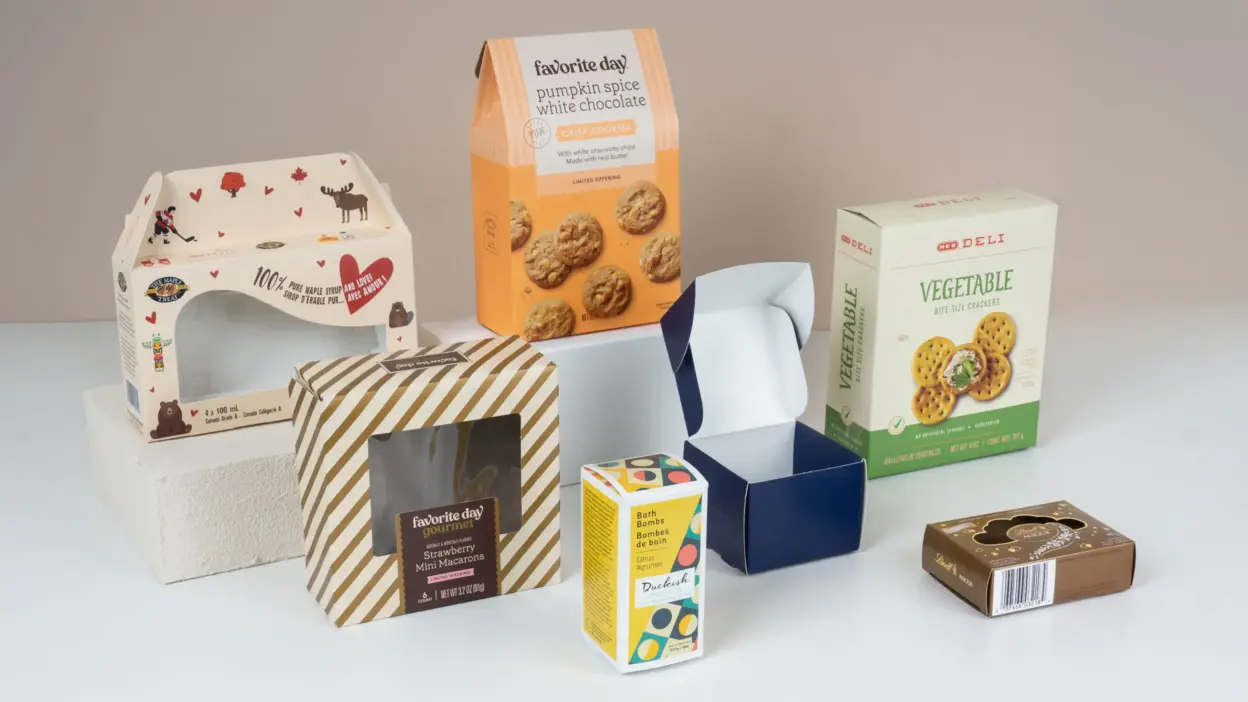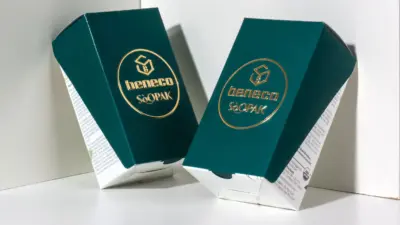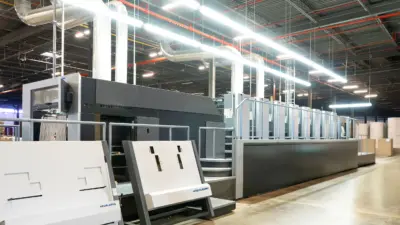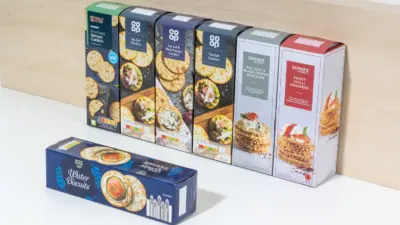Introduction
Folding cartons are the unsung heroes of product packaging. They protect your goods, communicate your brand’s story, and influence purchasing decisions. But the secret to their success lies in the paperboard you choose. With terms like C1S, C2S, Kraft, and FSC swirling around, selecting the right material can feel overwhelming. This guide breaks down the most common paperboard options, their pros and cons, and how to match them to your brand’s needs.
What Is Paperboard?
Paperboard is a thick, durable paper-based material (typically 0.25–1 mm thick) used to create folding cartons. It’s stronger than standard paper but lighter and more flexible than corrugated cardboard. Ideal for retail, food, cosmetics, and pharmaceutical packaging, paperboard balances protection, printability, and cost.
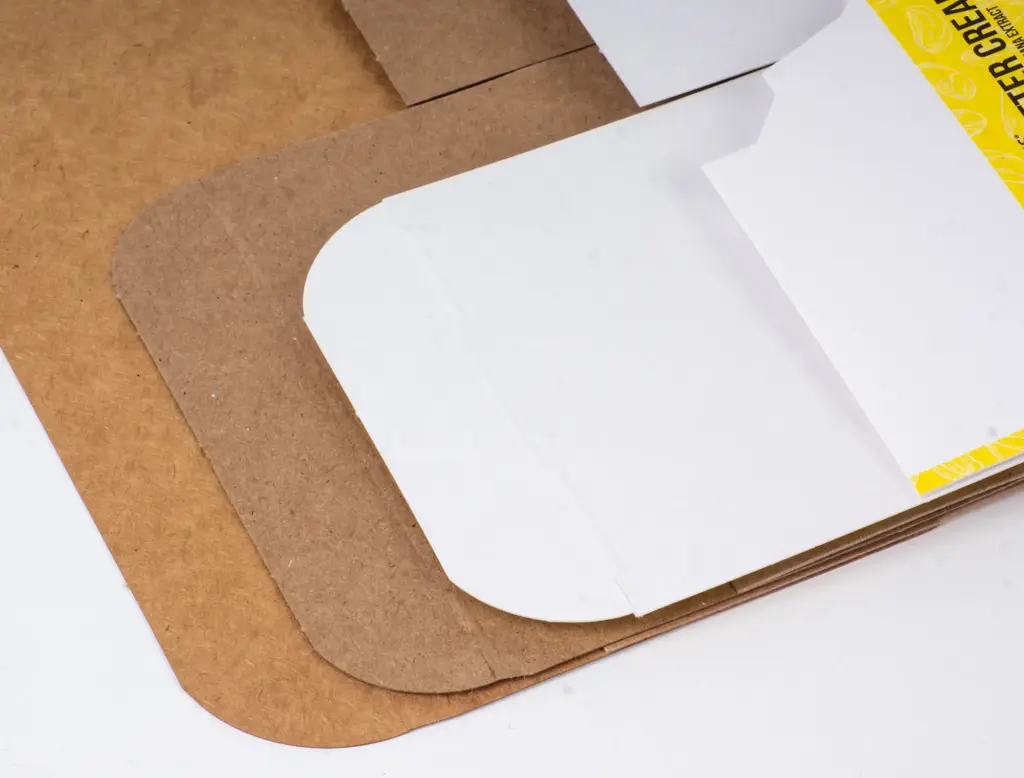
Key Paperboard Options for Folding Cartons
1. C1S (Coated One Side)
- Description: One side has a glossy or matte coating for vibrant printing, while the reverse is uncoated.
- Uses: Cereal boxes, cosmetic packaging, and retail cartons where only the exterior needs a polished look.
- Pros:
- Cost-effective for high-quality exterior prints.
- Lightweight yet durable.
- Cons:
- Uncoated side limits interior design options.
- Example: Kellogg’s cereal boxes use C1S for bold, colorful exteriors.
2. C2S (Coated Two Sides)
- Description: Both sides are coated for premium printability and a smooth finish.
- Uses: Luxury packaging, gift boxes, and products where both sides are visible (e.g., hinged lids).
- Pros:
- Superior print quality for intricate designs.
- Scratch-resistant surface.
- Cons:
- Higher cost than C1S.
- Example: Apple’s iPhone boxes use C2S for a sleek, high-end feel.
3. Kraft Paperboard
- Description: Unbleached, natural brown paperboard made from chemical pulp. Known for its rustic, eco-friendly appeal.
- Uses: Sustainable brands, organic foods, and artisanal products.
- Pros:
- Biodegradable and recyclable.
- High tear resistance.
- Cons:
- Limited color options (works best with minimalist designs).
- Example: Lush Cosmetics uses Kraft for its naked packaging line.
4. CCNB (Clay-Coated News Back)
- Description: Features a coated front for printing and a newsprint-like back (made from recycled fibers).
- Uses: Cost-sensitive projects like tissue boxes, dry food packaging, or disposable cartons.
- Pros:
- Budget-friendly.
- Lightweight and printable.
- Cons:
- Less durable than C1S/C2S.
- Example: Generic tissue boxes often use CCNB.
5. FSC-Certified Paperboard
- Description: Paperboard sourced from responsibly managed forests, certified by the Forest Stewardship Council (FSC).
- Uses: Brands prioritizing sustainability (e.g., eco-conscious cosmetics, organic snacks).
- Pros:
- Meets ethical and environmental standards.
- Appeals to eco-minded consumers.
- Cons:
- Slightly higher cost than non-certified options.
- Example: Who Gives A Crap toilet paper uses FSC-certified materials.
6. SBS (Solid Bleached Sulfate)
- Description: Bright white, fully bleached paperboard with a coated surface for premium prints.
- Uses: High-end cosmetics, pharmaceuticals, and frozen food packaging.
- Pros:
- Excellent for metallics and vibrant colors.
- Oil- and moisture-resistant.
- Cons:
- Not biodegradable (unless specified).
- Example: Estée Lauder skincare boxes often use SBS.
7. Recycled Paperboard
- Description: Made from post-consumer waste (e.g., old newspapers, cartons).
- Uses: Eco-friendly brands across industries.
- Pros:
- Reduces environmental footprint.
- Often cost-competitive.
- Cons:
- May have slight color variations.
- Example: Seventh Generation household products use recycled paperboard.
How to Choose the Right Paperboard
Consider these factors when selecting a material:
- Print Requirements: Need vibrant colors? Choose C2S or SBS. Prefer a natural look? Opt for Kraft.
- Budget: CCNB and C1S are cost-effective; FSC/SBS are pricier.
- Sustainability Goals: Prioritize FSC, Kraft, or recycled options.
- Durability: For heavy items, choose SBS or thick C2S.
- Regulatory Compliance: Food-safe coatings may be required for edible products.
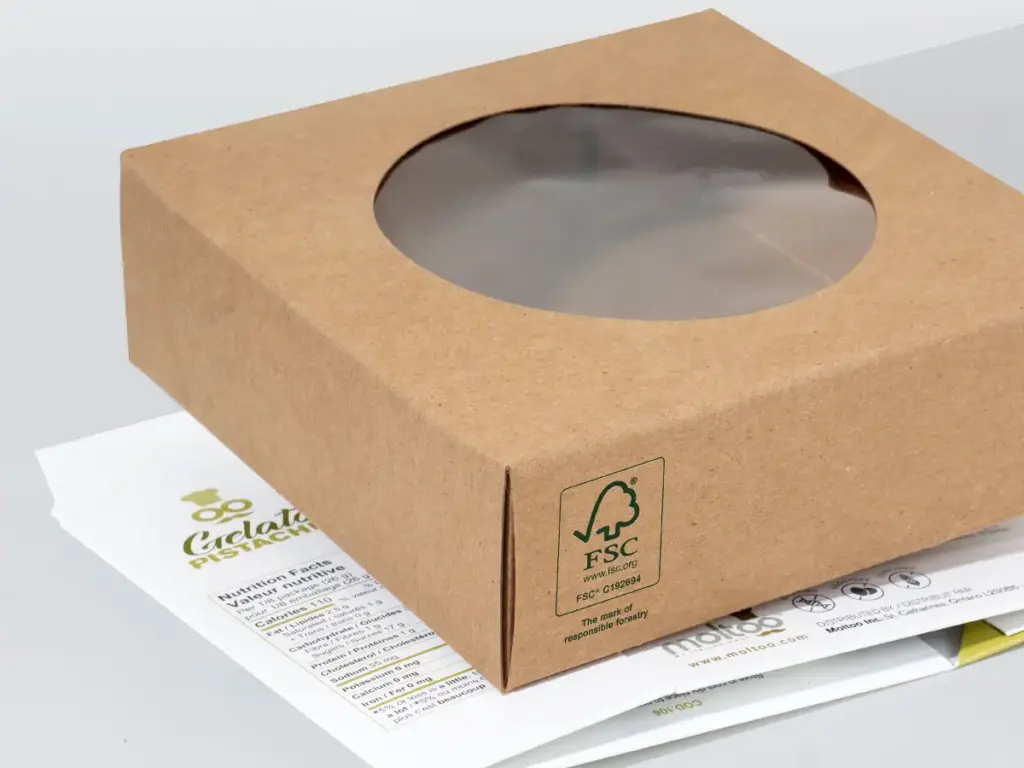
Comparison Table: Paperboard Options at a Glance
| Type | Best For | Sustainability | Cost |
|---|---|---|---|
| C1S | Retail packaging | Moderate | Low |
| C2S | Luxury goods | Moderate | High |
| Kraft | Eco-friendly brands | High | Moderate |
| CCNB | Budget projects | Low | Very Low |
| FSC | Ethical brands | High | Moderate |
| SBS | Premium prints | Low | High |
| Recycled | Circular economy | High | Low-Moderate |
Common Mistakes to Avoid
- Ignoring Coatings: Using uncoated board for photo-realistic prints results in dull colors.
- Overlooking Certifications: Failing to use FSC-certified materials can alienate eco-conscious buyers.
- Mismatching Durability: Heavy products require thicker SBS or C2S to prevent crushing.
Final Thoughts
Choosing the right paperboard for your folding cartons is a strategic decision that impacts aesthetics, functionality, and brand perception. Whether you prioritize cost, sustainability, or premium appeal, there’s a paperboard option tailored to your needs.
Pro Tip: Partner with a packaging supplier who offers material samples and guidance to test options before committing.
Elevate Your Brand Packaging
Craft packaging that makes your products shine
Get started today!
